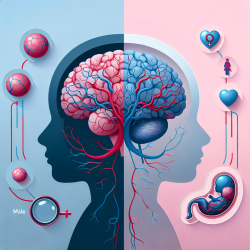Introduction
In the realm of online therapy services, data-driven decision-making is crucial for optimizing educational outcomes. TinyEYE, a leader in providing online therapy services to schools, is committed to leveraging cutting-edge research to enhance the quality and effectiveness of its services. A recent study titled "Transverse Coherence Limited Coherent Diffraction Imaging using a Molybdenum Soft X-ray Laser Pumped at Moderate Pump Energies" offers intriguing insights that can be applied to improve the precision and effectiveness of online therapy interventions.
Understanding Coherent Diffraction Imaging (CDI)
Coherent Diffraction Imaging (CDI) is a powerful tool used in nanoscale investigations, particularly in the field of microscopy. It involves the use of laser-driven high harmonic generation (HHG) sources and soft X-ray lasers (SXRLs) to achieve high-resolution imaging. The study evaluates the performance of SXRLs in CDI, highlighting their potential to provide high-resolution images in significantly shorter integration times compared to traditional HHG sources.
Key Findings and Implications for Online Therapy
The study reveals that SXRLs, when pumped at moderate energies, can achieve a resolution of sub-20 nm, making them highly effective for imaging micron-scale objects. This high-resolution capability is critical for online therapy services that rely on precise and detailed imaging to assess and monitor student progress. By integrating these advanced imaging techniques, TinyEYE can enhance the accuracy of its assessments and tailor interventions to better meet the needs of each student.
- Enhanced Precision: The high photon flux and scalability of SXRLs allow for more detailed and accurate imaging, which is essential for assessing subtle changes in student performance over time.
- Reduced Integration Time: The ability to capture high-resolution images in shorter times means that therapists can quickly obtain the data they need to make informed decisions, reducing the time students spend in assessments.
- Scalability: The potential to scale SXRLs to higher repetition rates opens new possibilities for real-time monitoring and feedback, enhancing the overall effectiveness of online therapy sessions.
Encouraging Further Research
While the study provides promising insights, it also highlights the need for further research to fully realize the potential of SXRLs in CDI. Practitioners are encouraged to explore how these advanced imaging techniques can be integrated into their practice to improve educational outcomes. By staying informed about the latest developments in CDI and SXRL technology, practitioners can ensure they are providing the highest quality of care to their students.
Conclusion
Incorporating the findings from this research into online therapy services can significantly enhance the precision and effectiveness of interventions. By leveraging advanced imaging techniques like SXRL-driven CDI, TinyEYE can continue to lead the way in providing data-driven, high-quality therapy services that meet the evolving needs of students and educators.
To read the original research paper, please follow this link: Transverse Coherence Limited Coherent Diffraction Imaging using a Molybdenum Soft X-ray Laser Pumped at Moderate Pump Energies.










